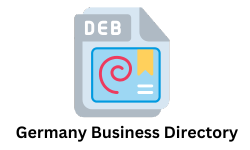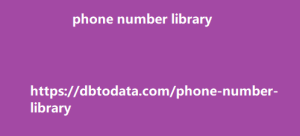Image Enhancement Using AI Image enhancement is all the edits we have to make to one photo so that it’s perfect for where we want to use it.be used for this purpose. Restoration and Upscaling You can upscale low-resolution images while preserving and enhancing the important details. This technique is sometimes referred to as Super-Resolution. AI can handle this for you whenever you want to use old or low-quality images that are relevant to your content but aren’t as clear or crisp as you need them to be. Compression On the other hand, AI can also be used to reduce your image file size, without damaging their visual quality.
Optimized image sizes can speed up your page
loading times, which we know affects your page’s ranking. Object Tagging and Recognition AI can also analyze and identify objects, scenarios, and even people in the images. Then, they can use that data to optimize the image’s filename, alt text, and captions for you. It can even insert relevant keywords if you ask it to. These tags help Google better understand what your image is showing users, which helps it to categorize your images properly, making sure it shows up in relevant image search results. As a result, this can boost your visibility in the SERPs. Background Removal Ever wanted to showcase a specific product or model, but the background of the photo is too distracting and noisy? Or, did you want to make an item your icon, but are having a hard time removing everything else in the photo? AI can help with this, and remove the background for you.
Image Composition and Cropping AI algorithms
can now also analyze and suggest proper image compositions, sizes, and patterns for the images. They can also suggest visually appealing or well-balanced layouts that are suitable for your website pages. Benefits of AI-generated images for SEO Optimizing your images is an essential SEO practice that often gets overlooked. Let me tell you why it’s so crucial. Improved User Experience We touched upon it earlier, but things like page speed, visual appeal, and layout composition are improved by using AI. These things affect user experience, which plays a vital role in customer retention, engagement, and traffic. Basically, using AI to optimize your images can help your website be more appealing and usable for your audience, which can keep them on your website for longer.
Increased Visibility in Search Engines
Using unique, properly tagged, and descriptive images–which is easy with AI image tools–you’re optimizing your visual content for Google’s image search. In short, these tools make image SEO a walk in the park. From this, you, of course, improve your pages’ visibility. You might even snag a few featured image snippets for your pages. Using AI to enhance all aspects of your images, even their metadata, is a good practice to ensure Google understands the context and relevance of your images, so it’s more likely to show your images to users. How to Use AI to Create Images How to use AI in this scenario really depends on the tool you decide to use, but most use a pretty standard process.
I’ll cover each step as well as a few tools you might
want to try. Image Selection and brazil phone number library Creation If you’re using existing images as a guide or basis for these tools to generate new ones, make sure you’re using the right ones. Check that your images are high-quality, original, and relevant to the content you want them to be added to. Creating AI Prompts If you’re working from scratch, then you need to know how to craft the perfect prompt for your tool. This will lessen the back and forth with the tool to generate the images you’re looking for. I recommend following these considerations when writing your prompt: Mention important, specific details.
Use brief, easy-to-understand
sentences. Include an image reference or artistic style. Decide between creative and realistic. Use photography terms. Use AI to generate prompts. Let’s get into each step: Mention important, specific details Mention everything–and I do mean everything–you want this image to have. Be as detailed as you can get. Be as descriptive as you can be too, since AI can now understand things like emotions and tone. The less the AI needs to infer or interpret, the more accurate the photo will be to your vision. Use brief, easy-to-understand sentences Being descriptive and adding all the details you can think of helps. But remember to keep each sentence short, and to use proper punctuation and grammar, so you can avoid confusing your AI tool.
Include an image reference or artistic style If
you can feed the AI images or before seo, website design must first be convincing visuals as a reference, do so. If not, you can describe the subject, context, and composition you want. This can be the styles of well-known painters, animators, photographers, or other artists you want your generated images to feel like. You can even include cinematography examples if you want it to have the same aesthetic and overall mood. Decide between creative and realistic AI can get really liberal with the stuff it creates, so you have to decide early on whether you want it to do that, or to stick to a more realistic interpretation of your prompt. Use photography terms You can also use photography terms and even reference specific camera models if you’re trying to generate realistic photos.
Set things like your aperture, shutter
speed, ISO, and hit post terms like “candid,” or “award-winning” to create more specific images. Use AI to generate prompts You can teach other AI, specifically text-generators like ChatGPT, to learn how to make these kinds of prompts for you. You can further prompt them to create templates specific to the AI image tool you want to use. Priming them can help you generate extremely detailed and precise photo prompts to make the whole process even choose from, and I rounded up three tools that I personally think work pretty well. I did a quick review of each and included their pros and cons.

